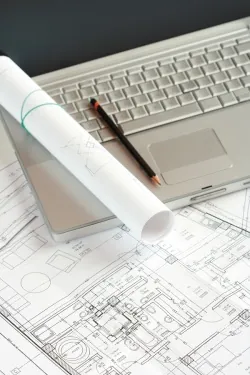Use these interior design ideas to add style and enhance the living space in your home.

- Draperies are getting longer and longer. One of the best ways to add height to any room is to place window treatments just below the ceiling line. Use this designer trick in any room that could use a little lift.
- If you are planning a new kitchen, don’t miss the chance to build in space — creating touches such as a drawer-front that pulls out to reveal a useful extra work surface. Some ranges even incorporate drawers into the base area below the cabinets.
- As well as serving as decorative features and essential dressing aids, mirrors also play a less obvious role in a room scheme. They are invaluable for reflecting light, and can increase the illusion of space in a small room.
- Adding a skylight is one of the quickest ways to make any room brighter, creating an open and airy feeling. Skylights produce a top-lit architectural drama that windows often can’t match. Plus, dollar-for-dollar, they’ll usually bring in more light than windows.
- To make the most of a shared bathroom, consider these guidelines. For adequate elbowroom, the minimum clearance between two sinks in the bath should be 30 inches, centerline to centerline. Using pocket doors rather than hinged doors in the entrance way can save space.
- Changing the spindles on a covered porch or patio can easily change the style of the facade. Using a smooth, more rounded spindle creates a Victorian feel while the use of a square, more angular spindle can reflect either a Craftsman,
Rustic, Modern or Classic style influence to a design. Staying true to the overall design style of the home will make choosing a spindle style much easier and one that will better complement the home overall.
- Adding wainscoting to an existing room can add a cottage feel and creates an old-fashioned look especially when added to a kitchen or bedroom. This design idea works well when an update is needed to an older home but you don’t want the renovation looking “too new” that it doesn’t integrate with the rest of the home.
- Barstools at a counter or center island in the kitchen are a convenient place for breakfast and other quick meals or school projects and homework that may need supervision or assistance from a parent.
- Reconfigure a porch, sunroom or large living area for semi-outdoor living by installing ceiling fans, screens and natural stone floors that will weather. Outfit garden-style furnishings with weather-resistant cushions and pillows.
- To help bring the outdoors in to your home use natural materials. Stone, wood and all different kinds of tile are great for contributing to an outdoor feel. Granite, iron or bamboo are other elements that help add color and texture creating contrast to an interior.
- One of the top trends in home design currently is the use of “flexible” floor plans. Traditionally designed styles with separate living and dining rooms are being replaced by large family areas or great rooms which offer more flexibility for family living.
- When planning a computer desk, you need a desk surface that is at least 24 inches deep unless you are using a laptop. But, keep in mind even more surface space will be welcomed for files and papers.
- Planning the layout of a living room is as important as choosing the color scheme. To make the task a little easier, draw a floor plan to scale on graph paper and cut out separate pieces for the furniture. Place these on the plan and move them around until you have an arrangement that suits your needs.
- Partitions help distinguish the edge of rooms within a home and can be flexible or fixed. They can take the form of walls, glass panels, doors or even fireplaces. Low partitions are especially appealing because they allow the overall space to remain open and airy.
- Clutter can really detract from an open floor plan. When planning your living area, make a list of all of the items that will need to be stored. Everything from media equipment to children’s toy bins should be considered. Also, don’t forget to list books and collectibles. Often times when rooms are designed there is not enough storage for all of the everyday living items and rooms pile up with unwanted clutter. Designing a room initially with these needs in mind will not compromise the overall beauty of the space once all of your belongings are in place.
- Positioning the sink beneath a window gives a cheery outlook to anyone on washing-up duty.
- An unfinished portion of a basement is the perfect place to incorporate wine storage or a wine cellar. With its cooler temperature year-round and little amount of light, it’s a natural choice for storing these refreshments.
- When designing the kitchen, locate the preparation area between the refrigerator and the sink. Place any ingredients, mixing equipment or bowls here for best usage.
- If you want to add an island to the kitchen, think thin. A narrow island will still provide a great work surface without compromising the overall space.
Here are some related articles:
Save this article to:
back to top